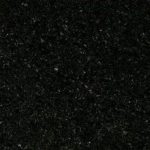Content
- FLOW NET CALCULATION
- Tutorial: Register a Single-page application with the Microsoft …
- What is basic difference between a Turbine and The Pump?
- Laboratory modeling for contaminant migration monitoring using electrical resistivity method
- Geotechnical Investigation for Offshore Platforms Design
- How to Draw Flow Nets and Estimate Water Seepage

The quantity of flow through each flow channel is constant. Flow lines must intersect equipotential lines at right angles. The authors gratefully acknowledge the financial support by National Science Foundation . We also wish to thank Carlos Molano as well as two anonymous reviewers for their detailed comments, which helped improving the final version of the manuscript.
What are the rules of flow nets?
- The angle of intersection between each flow line and an equipotential line must be 90o which means they should be orthogonal to each other.
- Two flow lines or two equipotential lines can never cross each other.
- quantity of seepage occurs in each flow channel.
All the approaches above are aimed at emphasizing fundamental knowledge and stimulating student engagement. Figure 5.33 shows a general condition where a flow channel crosses the boundary of two soils. Soil layers 1 and 2 have permeabilities of k1 and k2, respectively.
FLOW NET CALCULATION
There is a high demand for groundwater instruction because of strong employment prospects for trained hydrogeologists and the growing recognition of groundwater in other fields such as water resources and biology. For example, an article published in Science how to draw flow nets indicates the strong demand for hydrogeologists. Department of Labor and the American Geological Institute , the job market for groundwater specialists is growing . Sketching may start by constructing the first flow line as shown in the figure 7.3 .
- The horizontal and vertical component of the hydraulic gradient are, respectively.
- Students can use the measured discharge, which is the total discharge from the reservoir downstream, to inversely calibrate the initial guess of hydraulic conductivity.
- Figure2 is a photomicrograph of sand grains from the St. Peter Sandstone .
- Now join all the points G, S, P, B to get parabola.
- It is a curvilinear net formed by the combination of flow lines and equipotential lines.
Students learn from the sand tank through interaction and visualization, and by collecting and interpreting data. This integrates the theories from lectures into the sand-tank laboratories, enhancing students’ skills and understanding. Students can use the measured discharge, which is the total discharge from the reservoir downstream, to inversely calibrate the initial guess of hydraulic conductivity. The manual trial-and-error approach not only improves the match but also provides key insights into how the groundwater system behaves. Figure10 is an example from a student who conducted the groundwater modeling exercise for the sand tank using the finite-difference method and automatic calibration of hydraulic conductivity with the measured discharge. The reader could check the latest work on groundwater modeling via spreadsheets by Gómez-Hernández .
Tutorial: Register a Single-page application with the Microsoft …
Normally, three to five flow channels are sufficient. 3 can be solved if the boundary conditions at the inlet and exit are known. The equation is used in the construction of flow net. Streamlines can be traced by injecting a dye in a seepage model or Heleshaw apparatus.
What is the graphical method of flow net construction?
Graphical construction of a flow net is a method of using pencil and paper to obtain a solution to the steady-state, homogeneous, isotropic, groundwater flow equation.